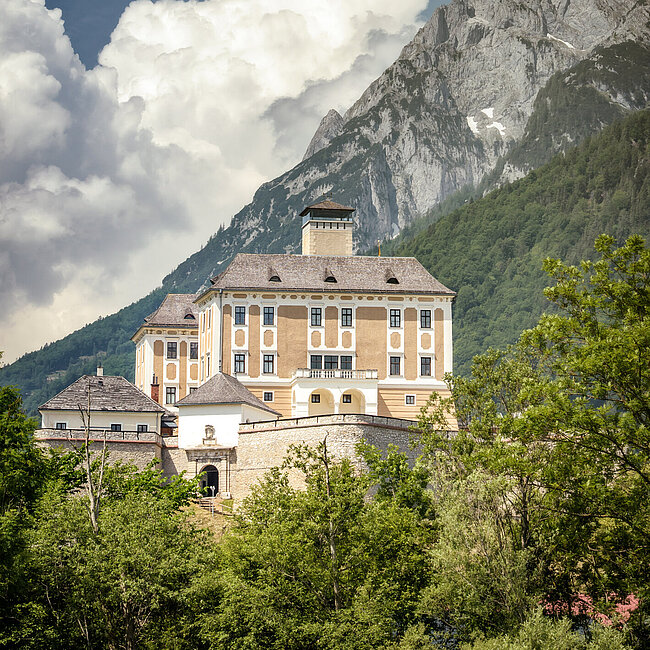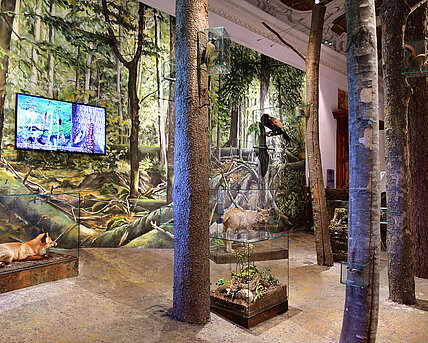The imposing form of Trautenfels castle rises majestically from the valley floor. This location was first occupied by a castle called Neuhaus in 1261. Here, on the crossroads of the salt route and the road along the Ennstal valley, it served to guard the river Enns crossing and the Styrian border a few kilometres to the west. In the thirteenth century, the principality’s castle passed into the possession of the Salzburg archbishopric. In the succeeding conflicts between the archbishop and the prince of Styria, the castle was conquered and destroyed at the end of the thirteenth century. Once reconstructed, Neuhaus took on great significance under the Praun family and above all under the Hoffmann family. During the reformation, Neuhaus developed into a centre of the new faith. Evidence of this is to be found in the remains of the foundation walls of a protestant church destroyed in 1599 and uncovered a few years ago a short distance from the castle. In the counter reformation that followed, the strategic importance of Neuhaus faded.
In 1664 the Styrian provincial governor Count Siegmund Friedrich von Trauttmansdorf acquired the building, had it redecorated in the baroque style and named it Trautenfels. The high quality frescoes on the first floor and in the castle chapel were executed by Carpoforo Tencalla in 1670, with stucco work by Alessandro Sereni.
After several changes of hands the castle was bought by Count Josef Lamberg in 1878. Using the dowry for his wife Anna, daughter of the Styrian armaments manufacturer Josef Wernel, and his own fortune, he was able to restore the somewhat neglected building to a state fit to live in. After the Count’s death, his widow Anna continued to run the household till 1942 until financial considerations forced her to sell and, after the second world war, possession passed to the Styrian youth hostel association. In the event, the youth hostel association was also unable to afford the upkeep over the long term and in 1983 the castle passed to local government. At that time the Trautenfels Castle Association was founded and was successful in bringing about the renovation of the building.
In the fifties (of the 20th century) a regional museum for the Styrian Ennstal and the Salzkammergut was built up as a department of the Joanneum Museum of the Province of Styria. Following the renovation of the castle from 1983 through till the provincial exhibition in 1992, this local collection has been displayed since 1998 in Trautenfels castle in a completely new form.
Among several attractions is a wonderful vaulted room containing sixteenth century frescos discovered and carefully transferred but a few years ago. The delicate paintings depict castles, villages, river and lake scenery, people at work and hunting.



























